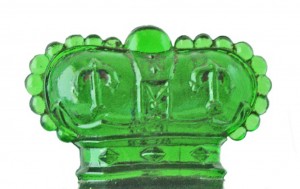It has been widely reported that William Sparks Thomson’s first showroom in London was opened in 1840 at 40, The Strand. I believe this is incorrect. The 1841 Post Office Guide to London has Charles Vaughan, silversmith, at 39 & 40, The Strand. There is not a “Thomson” or “The Crown Perfumery Company” at 40, The Strand until 1872.
The earliest mention of an address in London for William Sparks Thomson is as a skirt manufacturer at St. Martin’s-le-Grand in 1859. The 1861 Kelley’s Postal Directory has William S. & Chas. H. Thomson, crinoline manufacturers, at 3 Moor Lane, Cripplegate. John Jones Vaughan, silversmith, is listed at 40, Strand. I believe that Thomson sailed from New York to England and the Continent in the 1850s, first establishing a manufactory and showroom in London and then establishing crinoline factories in Paris, Annaberg (Saxony) and Brussels.
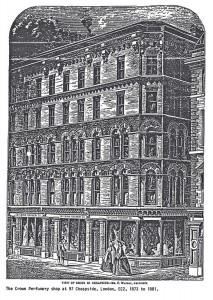
97 Cheapside
Courtesy Barry H. Gibson
Thomson’s clothing and perfume companies often shared office, warehouse and factory space in the same building or group of buildings. The New Fairfield Works, 48 & 49 Old Bailey, London were two adjacent brick buildings housing both The Crown Perfumery Company and WS & CH Thomson & Co. Both buildings were six floors, one being 130’x40’ and the other 80’x30’. The ground floor of 49 Old Bailey held a large retail shop for The Crown Perfumery Company. When a fierce fire completely destroyed both buildings on November 15th, 1893, a new location was found for both companies at 112-113 Fore Street.
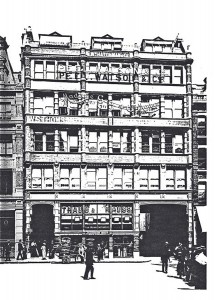
112-113 Fore Street, c. 1895
Courtesy Barry H. Gibson
The Sidney Road factory, locally known as “The Scent,” was an enormous complex, built specifically for a world class perfumery with the most modern equipment. The main building was three floors tall with over 40,000 square feet of work space. It was here that the finest pomades, essential oils, gums, resins and others ingredients were blended by master craftsmen, based on formulas developed by artistic noses.
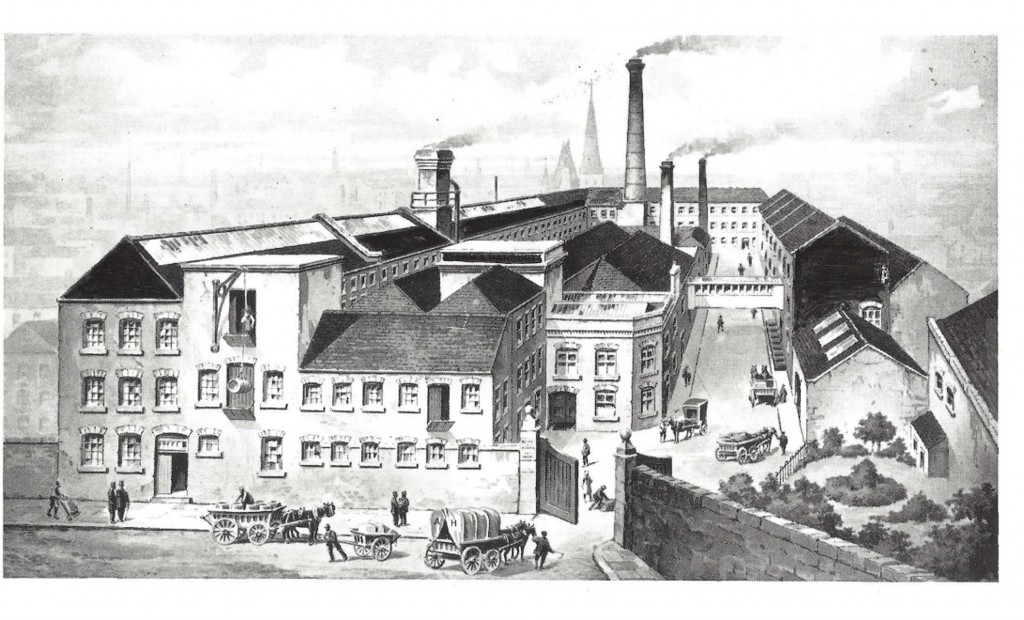
Sidney Road manufactory, c. 1900
The Crown Perfumery Company may have occupied only a portion of this industrial complex
Courtesy Barry H. Gibson
The perfume bottles were sealed with wax, with a thin covering of “onionskin” paper, kid leather and later celluloid over the stopper and neck. The bottle was finished with a hand tied ribbon.
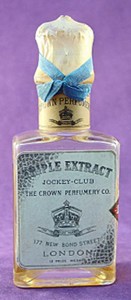
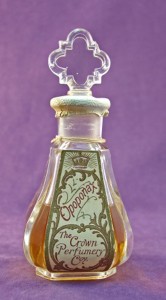
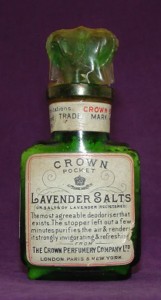
Onionskin Paper Kid Leather Celluloid / Plastic
One advantage the exquisite perfumes of The Crown Perfumery Company had over many other perfumers was ownership of their very own spiritine factory in Palmers Green, London. Charles E. Thomson wanted the very purest form of alcohol to distill the very best ingredients used in their perfumes. Most perfumers used alcohol derived from wood or corn. The French used grapes, which produced the smoothest alcohol with no offensive odors. It was their secret ingredient for their superior quality perfumes. In 1879 Crown’s spiritine factory began large scale production using the French grape method.
Crown used several different bonded warehouses in and around London for the manufacture and storage of all items designated for export.
Over the years, The Crown Perfumery Company had manufactory works at the following locations:
40, the Strand
97 Cheapside EC
Fairfield Mill, Old Ford Road
Blind Lane, Palmers Green, spiritine manufactory
New Fairfield Works, 48 & 49 Old Bailey
Sidney Road and Tynte Street
112 & 113 Fore Street, Homerton
108 & 109 Fore Street, Homerton
33-45 Kings Road, St. Pancras
International factories for The Crown Perfumery Company were located at:
25 Elm Street, New Haven, Connecticut
New York, New York
21 Bis Boulevard Thiers, Argenteuil, Seine et Oise, France
93-109 Kaiser Wilhelmstrasse, Hamburg, Germany
1 Fuhrichgasse, 10, Vienna, Austria
10 St. Markus Plads, Copenhagen, Denmark
.
